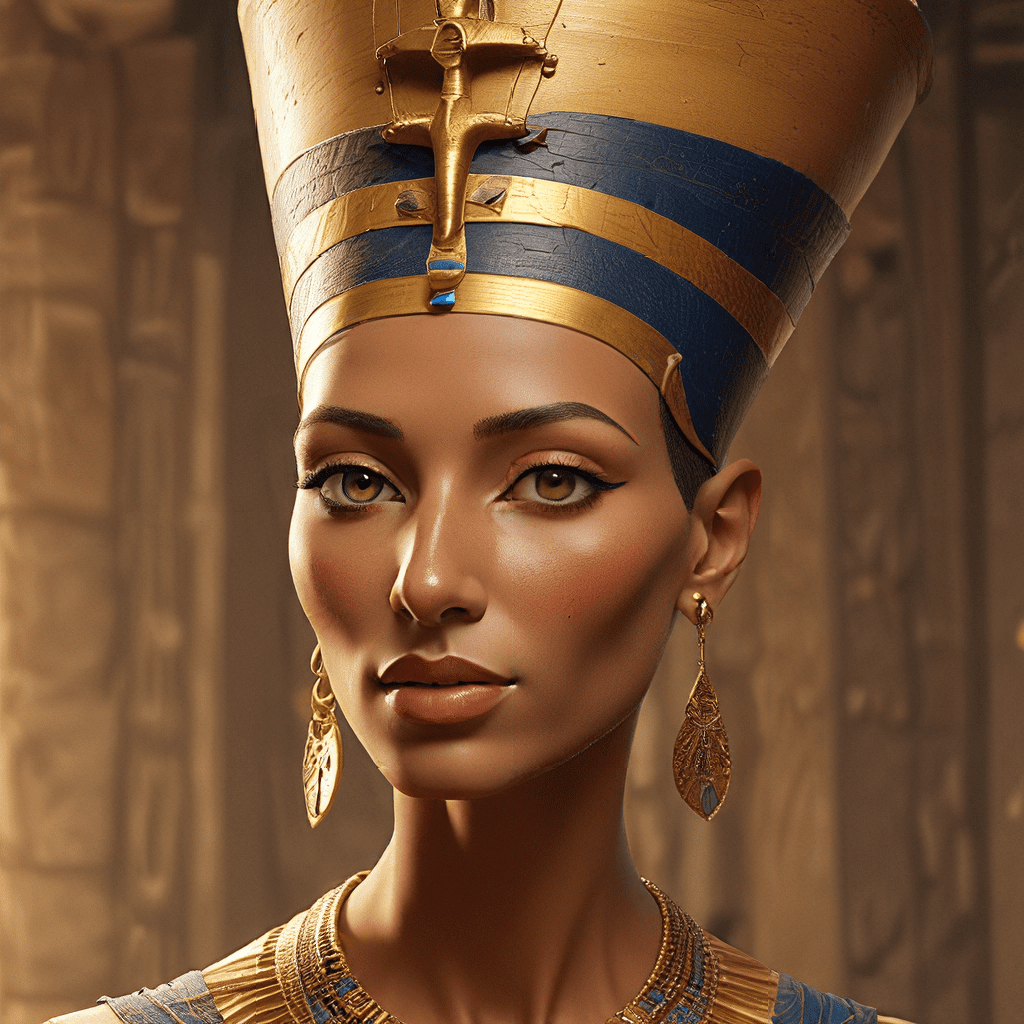Nefertiti: The Beautiful Queen, Wife of Akhenaten
I. Introduction
Nefertiti, a captivating figure in ancient Egyptian history, remains a beacon of both beauty and mystery. Her name, meaning “The Beautiful One Has Come,” aptly reflects her iconic status. While her life was entwined with the powerful Pharaoh Akhenaten, Nefertiti was more than just a royal consort. She wielded influence, held significant political power, and played a crucial role in shaping the course of ancient Egypt. Her disappearance from history, shrouded in intrigue, continues to fascinate scholars and the public alike.
II. Early Life and Origins
Born in the 14th century BC, likely in the ancient city of Thebes, Nefertiti’s early life is shrouded in mystery. Her lineage remains uncertain, although theories abound. Some scholars believe she may have been connected to the royal family, potentially a daughter of a high-ranking official. Despite the lack of definitive evidence, the sheer beauty and prominence attributed to her later in life suggest a privileged and well-connected upbringing.
III. The Rise of Akhenaten and Nefertiti
Akhenaten’s ascension to the throne marked a pivotal moment in Egyptian history. He embarked on a radical religious reform, abandoning the traditional polytheistic beliefs and introducing the worship of the Aten, the solar disk. This monotheistic shift had profound implications for Egyptian society, and Nefertiti played a pivotal role in its implementation. As Akhenaten’s co-regent and trusted advisor, she actively participated in the state’s religious ceremonies and administration. Together, they established a new era in Egyptian history, known as the Amarna Period.
IV. The Amarna Period: A New Era
Under Akhenaten and Nefertiti’s rule, a new capital city, Akhetaten (Amarna), was erected. This city, built anew to reflect the Aten religion, became a hub of artistic and cultural innovation. The Amarna Period witnessed a revolutionary shift in art and sculpture, characterized by elongated figures, exaggerated features, and a focus on the Aten. Nefertiti’s prominence in this new artistic style is undeniable. She is depicted in countless reliefs, sculptures, and paintings, often alongside Akhenaten, participating in religious ceremonies and demonstrating her active role as the Great Royal Wife.
V. The Great Royal Wife
Nefertiti’s title, “The Great Royal Wife,” was not merely a ceremonial designation. It reflected her substantial power and influence. She held administrative responsibilities, overseen royal workshops, and participated in political affairs. This is evident in the countless depictions of her in official roles, such as leading delegations, receiving tributes, and even holding the symbolic emblems of power. Nefertiti was not just a figurehead; she was a force to be reckoned with in ancient Egypt.
VI. The Mystery of Nefertiti’s Disappearance
While Nefertiti’s early life and rise to prominence are documented in ancient records, her disappearance remains a puzzle. She last appears in official records around year 12 of Akhenaten’s reign. Scholars have proposed various theories to explain her fate: some believe she may have died, others speculate she may have gone into exile, and a few suggest she may have even succeeded Akhenaten on the throne. The absence of conclusive evidence leaves the question of her fate unanswered, a tantalizing mystery that fuels continued interest in this ancient queen.
VII. Nefertiti’s Legacy: Art and Iconography
Nefertiti’s legacy transcends the limitations of time. Her image, particularly the iconic “Nefertiti bust” discovered in 1912, has become a symbol of beauty, grace, and power. This remarkable sculpture, now housed in the Neues Museum in Berlin, has captivated the world for generations, earning Nefertiti a place as one of the most recognized figures of ancient Egypt. Her image, replicated countless times in art, architecture, and popular culture, continues to embody the enduring fascination with her beauty and enigmatic mystique.




